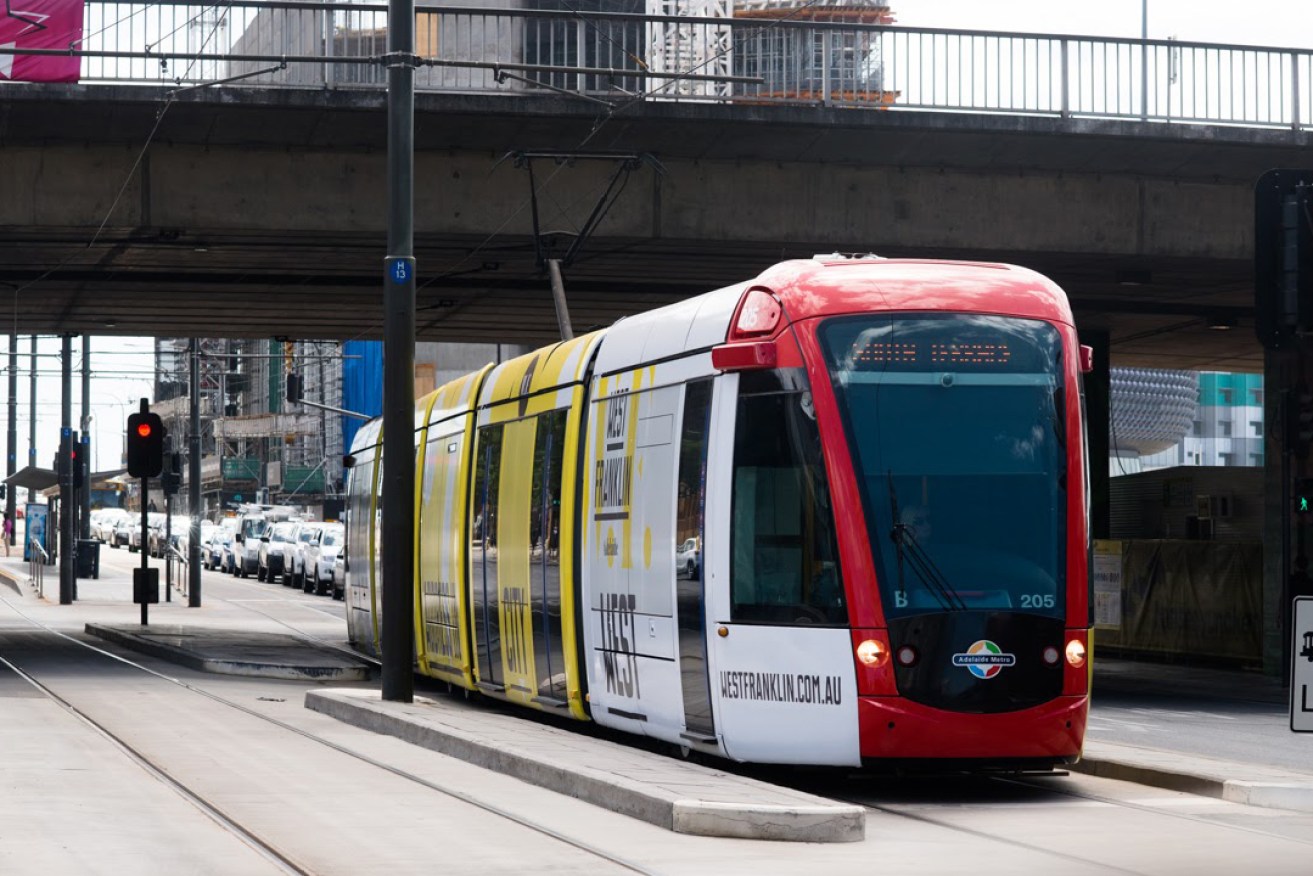Adelaide needs trams, more people: Infrastructure Australia
The new Infrastructure Plan for the nation has listed an expanded tram network for Adelaide among its priorities, and recommends governments push to increase the city’s population growth.


Photo: Nat Rogers
The plan, released today by federal agency Infrastructure Australia, finds that Australia’s smaller cities are expected to grow at a slower rate over the next two decades than the larger cities.
“Of our four smaller capitals, Hobart and Adelaide are projected to grow the slowest, increasing by 14 per cent and 24 per cent respectively between 2011 and 2031,” the plan says.
“Darwin is projected to grow more quickly (32 per cent), however as this applies to a relatively small base, its population will remain small by comparison.
“In contrast, Canberra will experience high growth (41 per cent) resulting in a boost of around 150,000 people to the city’s population by 2031.”
The plan says these smaller cities are highly liveable but need more people to prosper.
It recommends that: “Governments should aim to grow the population of our smaller capital cities, in particular Adelaide,
Hobart and Darwin beyond their current projections.”
“These cities offer access to impressive natural and built environments, high-quality infrastructure and services, cultural diversity and a skilled and dynamic workforce. We must ensure that we make the best use of these cities by growing their population and ensuring their continued economic prosperity.”
Infrastructure Australia also released a priority list for infrastructure development, which includes upgrading South Australia’s Gawler rail line, and building an extended tram network for the metropolitan area.
The agency says the 2015 Australian Infrastructure Audit found the performance of urban roads and public transport in Adelaide was a key challenge for South Australia.
The audit estimated that the cost of delay on Adelaide’s urban transport network was $1 billion in 2011 and would grow to $4 billion by 2031 in the absence of new infrastructure investments.
It also highlighted the relatively low use of public transport in Adelaide compared to other cities.
An expanded tram system is listed as a priority solution to this problem, with a timeframe of five to 10 years.
State Transport and Infrastructure Minister Stephen Mullighan welcomed Infrastructure Australia’s endorsement of the proposed AdeLINK tram network, included in the State Government’s Integrated Transport and Land Use Plan.
“The AdeLINK network will revolutionise our city and encourage people to live along these corridors, but to get these projects moving we require cooperation and funding from the Commonwealth Government,” he said.
Other priority projects identified by Infrastructure Australia include the electrification of the Gawler rail line, listed as a high priority, and sealing the Strzelecki Track in the state’s far north.
The report also listed as priorities:
- Completing the remaining sections of the north-south road corridor.
- Freight improvements to the Sturt Highway.
- Interstate rail capacity improvements.
- Developing new port infrastructure to serve regional mining.
- Building a 350km railway to the Gawler Craton mining region.
- New water infrastructure for agricultural industries on the Adelaide Plains.
Nationally, the agency has identified 93 projects and initiatives for its priority list, along with a 15-year infrastructure plan it says would save Australian households almost $3000 a year by 2040.
Chairman Mark Birrell said today the 78 recommendations would deliver more affordable, innovative and competitive energy, telecommunications, water and transport if implemented.
Western Sydney Airport and a Sydney metro connecting Chatswood to the CBD and the city’s south have been flagged as high-priority initiatives in need of further assessment and development.
The report says transport access to Sydney’s key employment and economic areas is reaching capacity, recommending a single deck fully-automated rail service.
Without additional capacity, 42,000 potential jobs will be unrealised in the next 20 years, it says.
It’s also recommended another rail line for Brisbane, with the existing rail connection into the CBD set to reach capacity in the next decade, and the road and bus network already at or close to capacity.
A metro with twin nine kilometre tunnels is also recommended for Melbourne, with its rail network operating at or close to capacity.
A high-speed rail link between Sydney, Melbourne and Brisbane remains on the cards, with the report recommending a corridor be preserved for future development.
Birrell said Australia was at risk of failing to capitalise on historic opportunities presented by the rising Asian middle class if it did not invest in nation-shaping projects.
Major Projects Minister Paul Fletcher said the Turnbull government would consider the report, insisting it would be an important tool for commonwealth and state governments.
“It’s a 15-year plan, these are not projects that can all be funded overnight,” he told ABC radio.
Infrastructure Australia has identified 93 projects and initiatives on its priority list
HIGH PRIORITY PROJECTS
- Melbourne’s CityLink Tulla widening project, to ease congestion between the airport and CBD
- Perth Freight Link, to ease congestion and delays to Fremantle Port
KEY INITIATIVES (identified priorities that need further development and assessment)
NATIONAL: preserve corridor for east coast high-speed rail, inland rail (Melbourne to Brisbane via inland NSW)
NSW: Western Sydney airport and airport public transport connection, Sydney metro from Chatswood to Bankstown via CBD, public transport between southern Sydney and CBD, M4 upgrades, freight rail access to Port Kembla
VIC: Melbourne metro, Hoddle St upgrade, remove level crossings, road connection between West Gate Freeway, CBD north and Port of Melbourne, public transport from airport to CBD, another runway for Melbourne airport
WA: Public transport to airport, another airport runway, improve road access to remote communities
QLD: Rail for Brisbane CBD, light rail expansion, Bruce Highway upgrade
SA: Melbourne/Adelaide/Perth rail upgrade, Gawler Line rail upgrade, tram network expansion
ACT: Public transport improvements
TAS: Derwent River crossing, Burnie to Hobart freight corridor
NT: Infrastructure and essential services for remote communities.
(Source: Infrastructure Australia)
– with AAP




